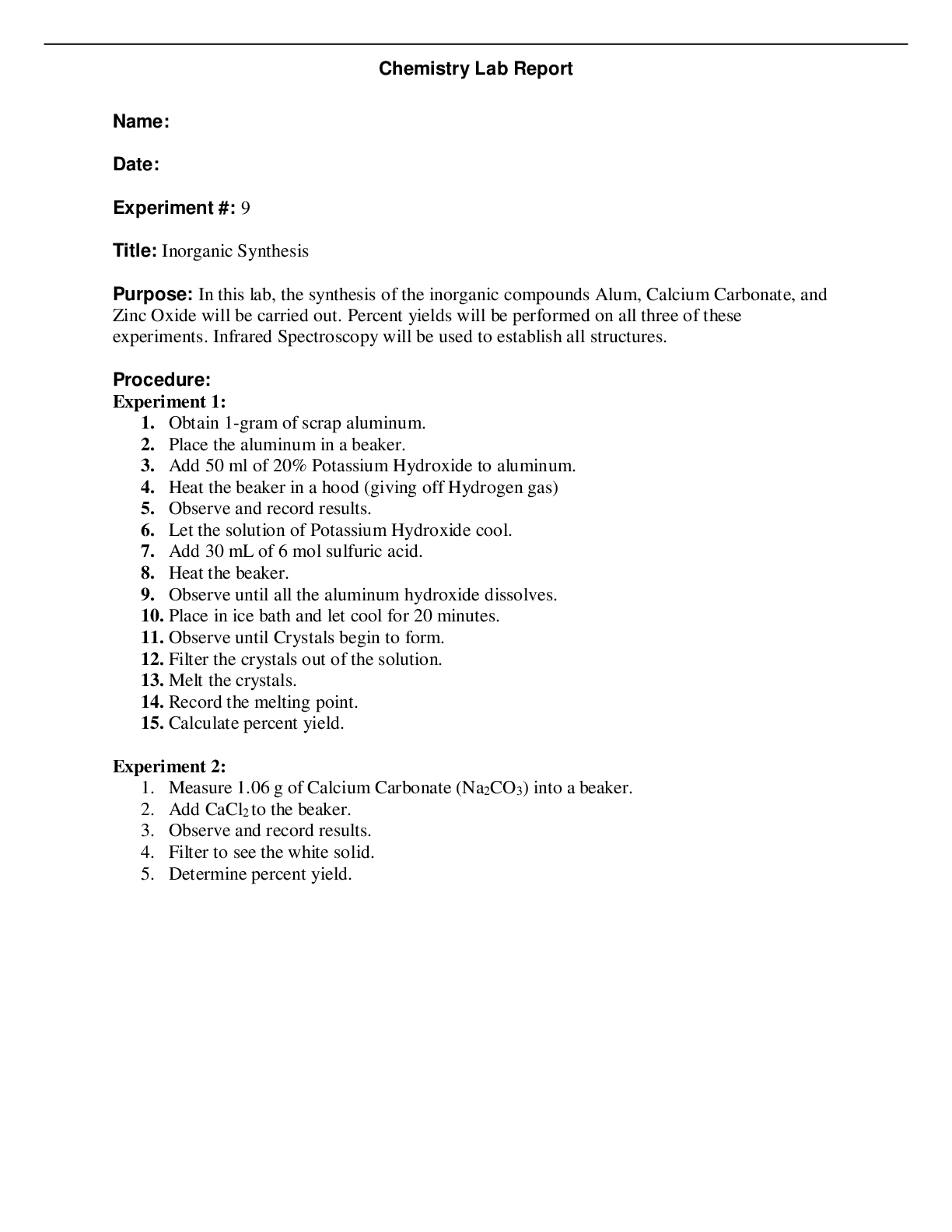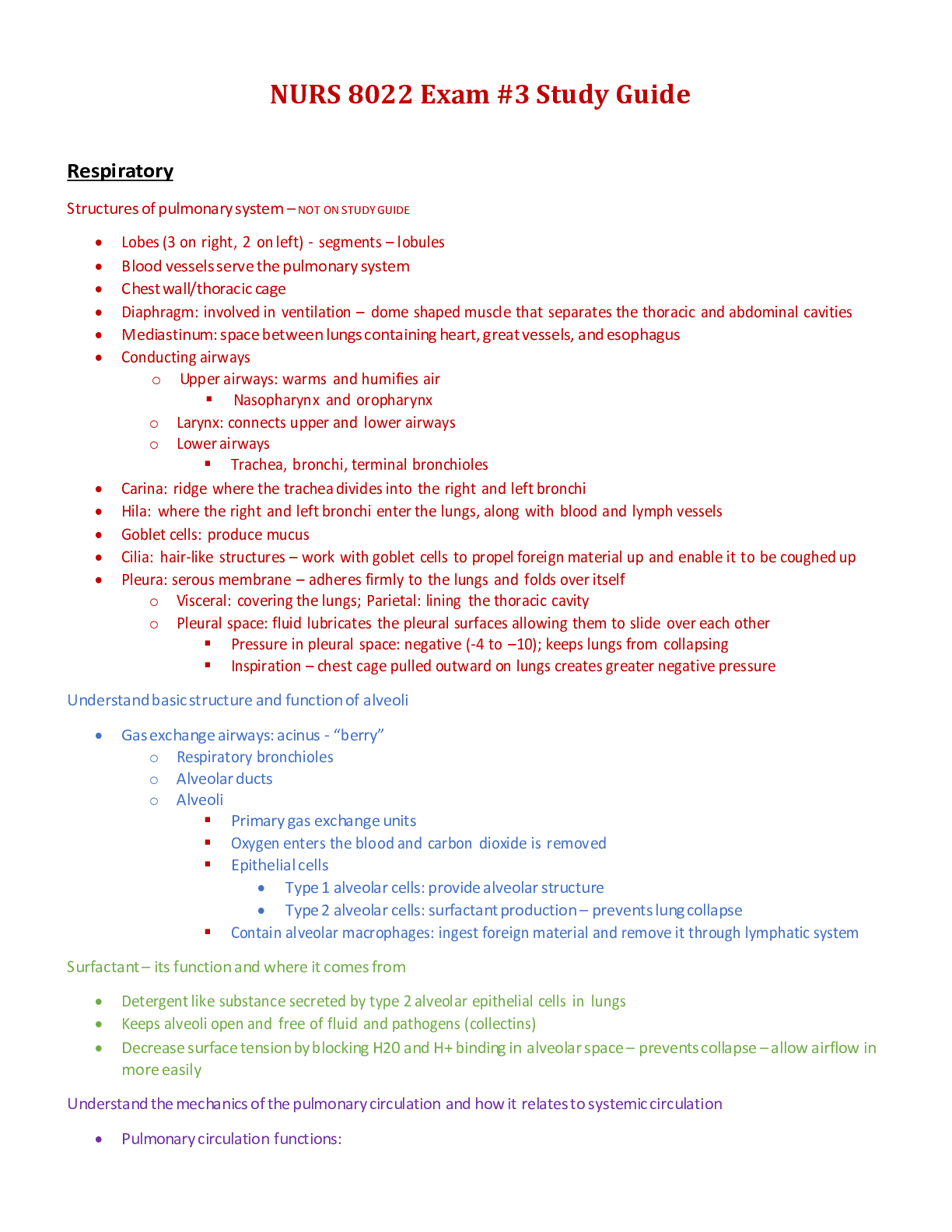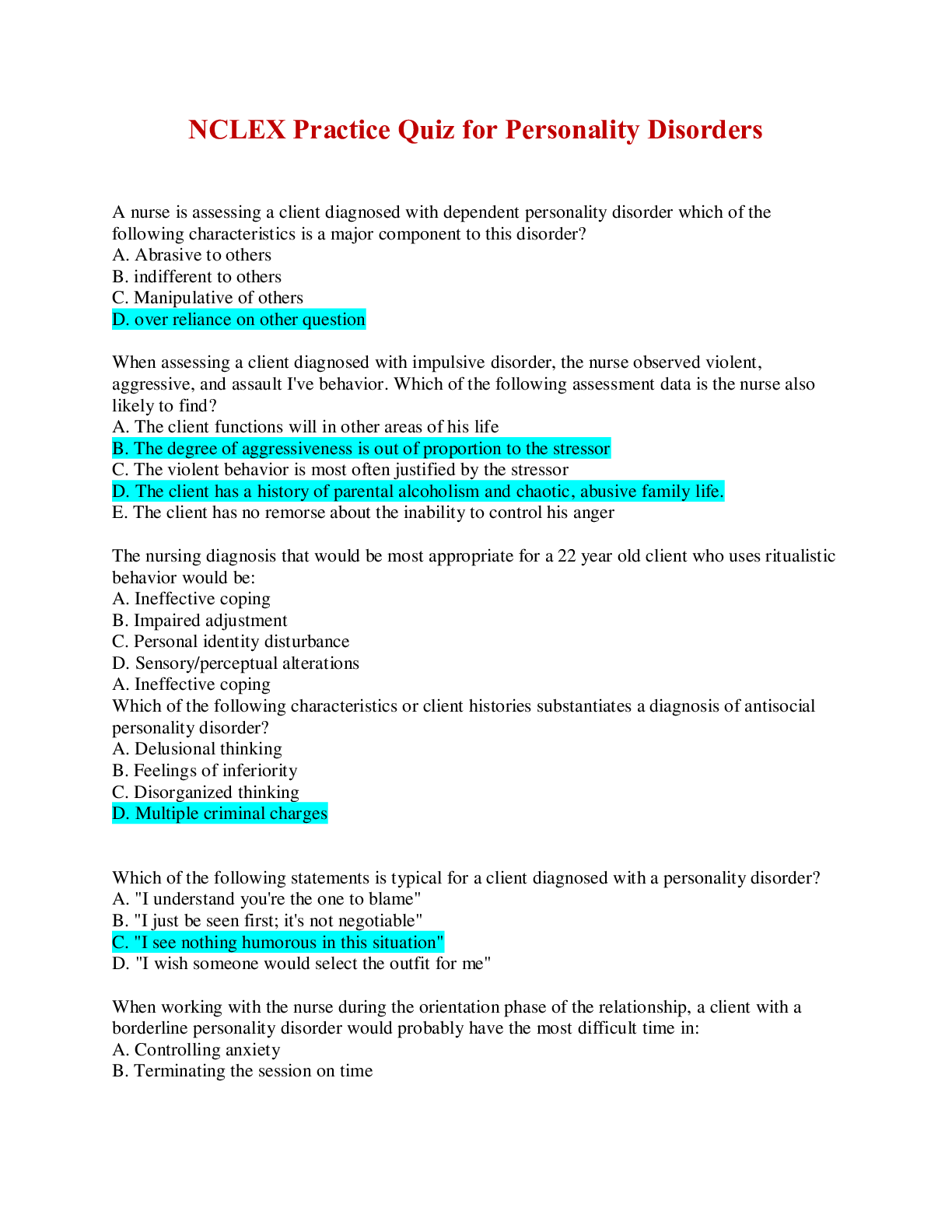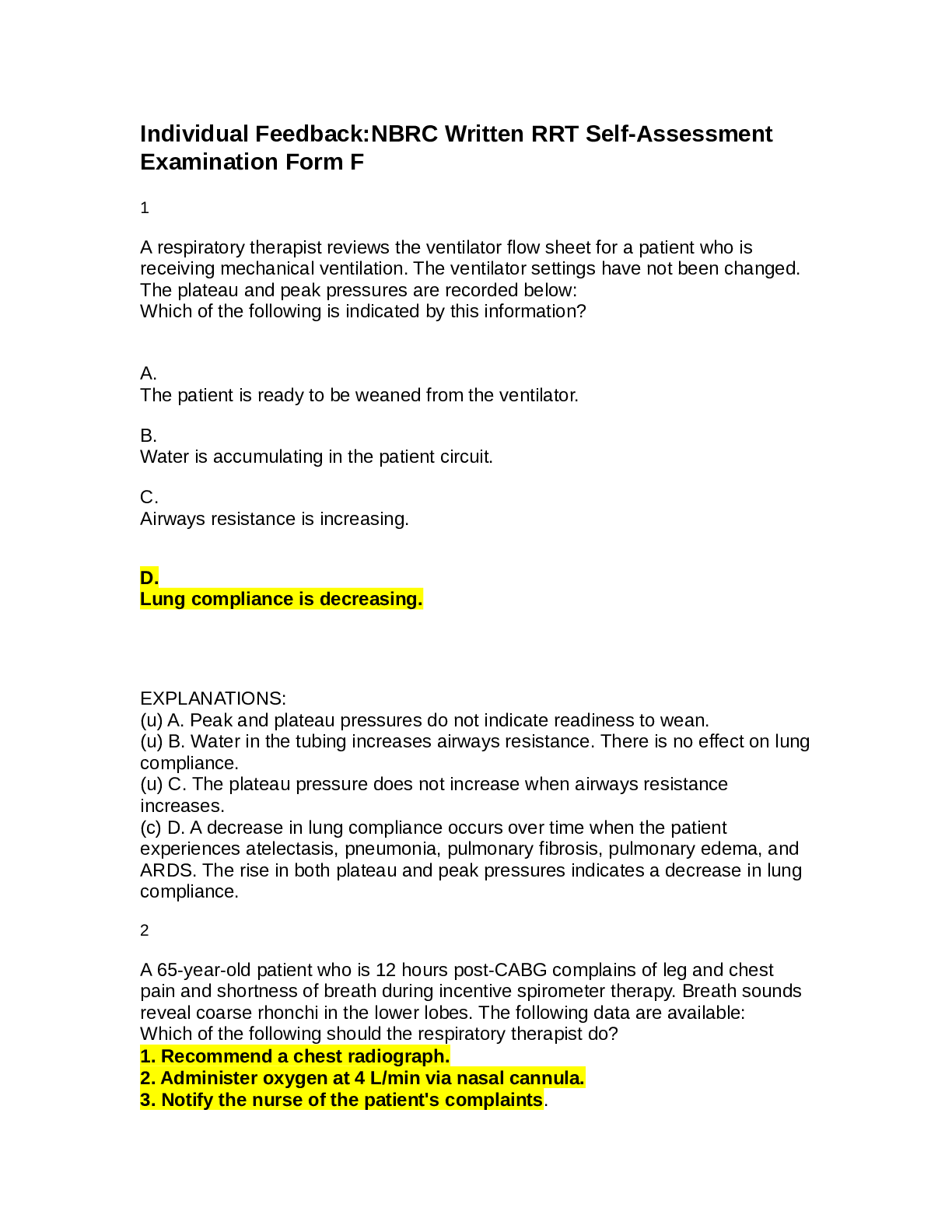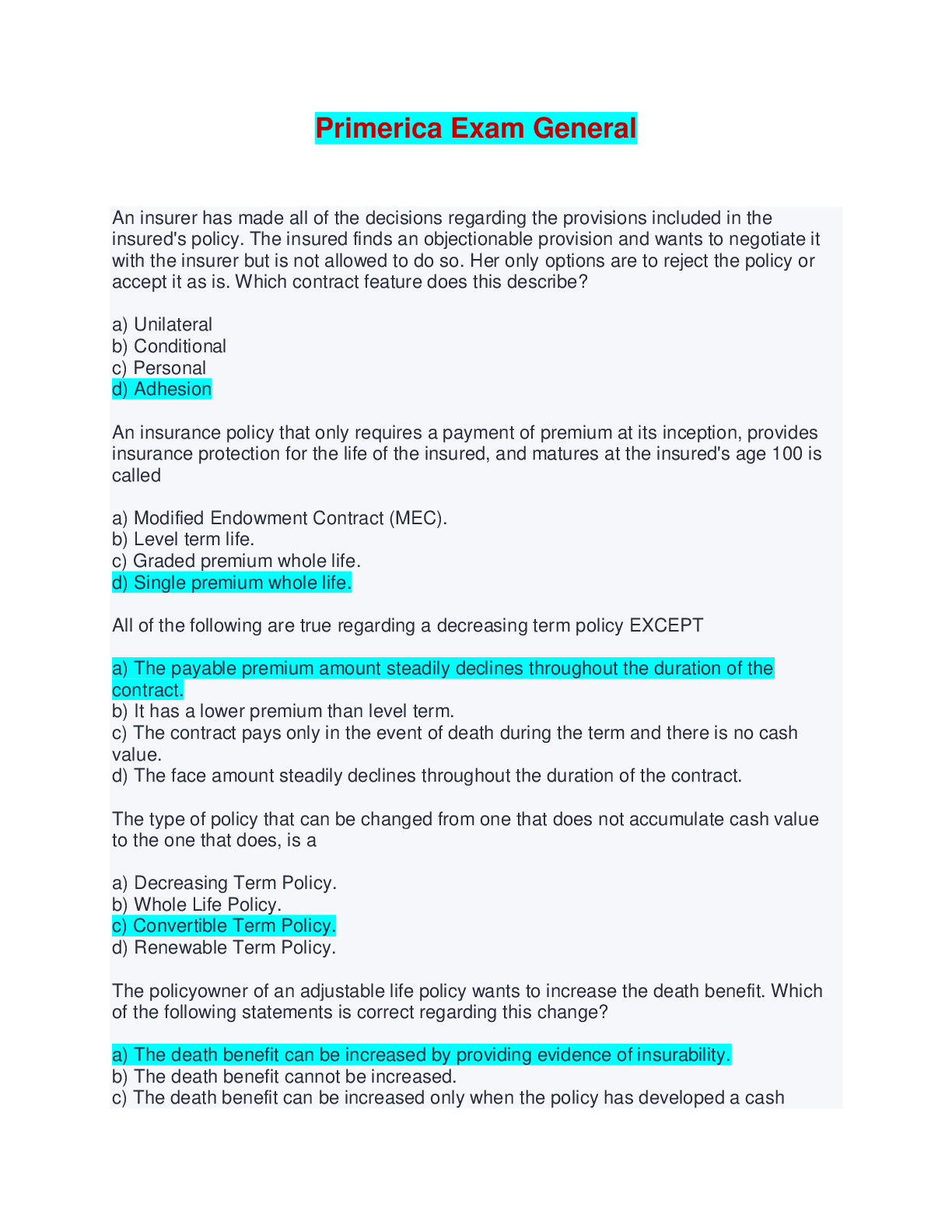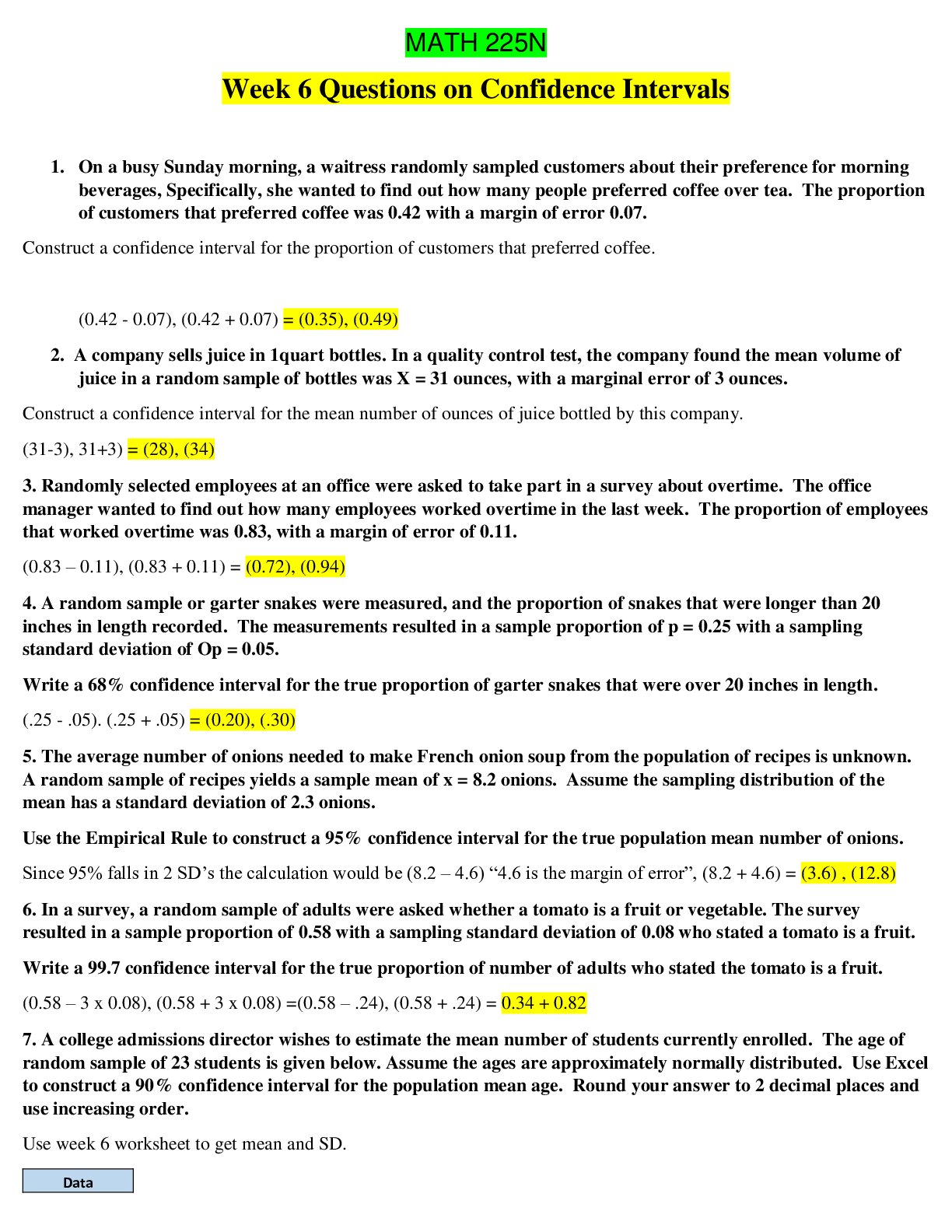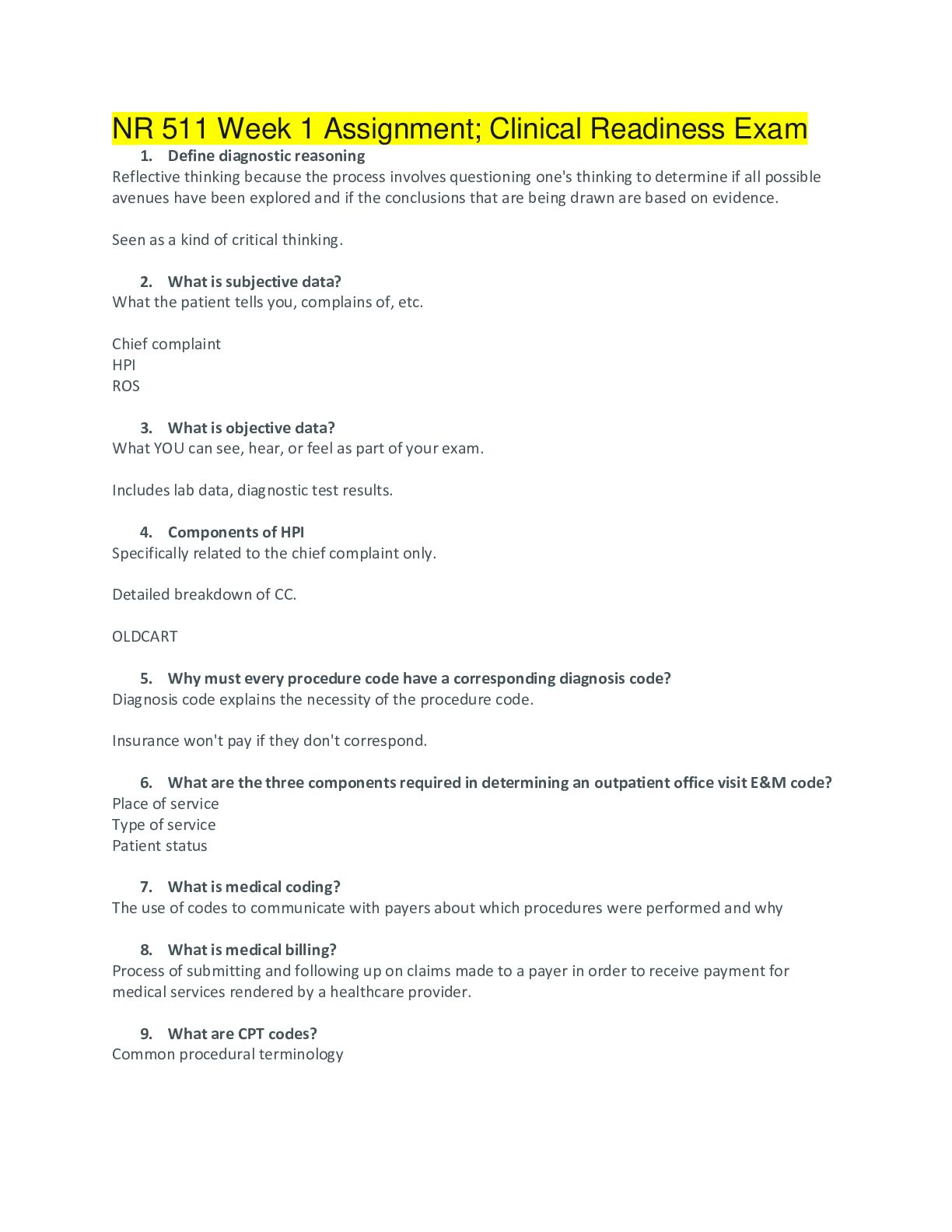Communication > EXAM > ICF Coaching Knowledge Assessment - Questions and Answers (All)
ICF Coaching Knowledge Assessment - Questions and Answers
Document Content and Description Below
ICF Coaching Knowledge Assessment - Questions and Answers ICF Definition of Coaching Partnering with clients in a thought-provoking and creative process that inspires them to maximize their personal... and professional potential. Core Competencies A. Setting a foundation B. Co-creating a relationship C. Communicating Effectively D. Facilitating learning and results What is under "Setting the Foundation"? Meeting Ethical Guidelines and Professional Standards Establishing the Coaching Agreement What is under "Co-creating the Relationship"? Establishing Trust and Intimacy with the Client Coaching Presence What is under "Communicating Effectively"? Active Listening Powerful Questioning Direct Communication What is under "Facilitating Learning and Results"? Creating Awareness Designing Actions Planning and Goal Setting Managing Progress and Accountability Setting the Foundation: Meeting Ethical Guidelines and Professional Standards (defined) Understanding of coaching ethics and standards and ability to apply them appropriately in all coaching situations. Setting the Foundation: Meeting Ethical Guidelines and Professional Standards (4 things) 1. Understands and exhibits in own behaviors the ICF Code of Ethics (see Code, Part III of ICF Code of Ethics). 2. Understands and follows all ICF Ethical Guidelines (see list). 3. Clearly communicates the distinctions between coaching, consulting, psychotherapy and other support professions. 4. Refers client to another support professional as needed, knowing when this is needed and the available resources. Setting the Foundation: Establishing the Coaching Agreement (define) Ability to understand what is required in the specific coaching interaction and to come to agreement with the prospective and new client about the coaching process and relationship. Setting the Foundation: Establishing the Coaching Agreement (3 things) 1. Understands and effectively discusses with the client the guidelines and specific parameters of the coaching relationship (e.g., logistics, fees, scheduling, inclusion of others if appropriate). 2. Reaches agreement about what is appropriate in the relationship and what is not, what is and is not being offered, and about the client's and coach's responsibilities. 3. Determines whether there is an effective match between his/her coaching method and the needs of the prospective client. Co-Creating the Relationship: Establishing Trust and Intimacy with the Client (defined) Ability to create a safe, supportive environment that produces ongoing mutual respect and trust. Co-Creating the Relationship: Establishing Trust and Intimacy with the Client (6 things) 1. Shows genuine concern for the client's welfare and future. 2. Continuously demonstrates personal integrity, honesty and sincerity. 3. Establishes clear agreements and keeps promises. 4. Demonstrates respect for client's perceptions, learning style, personal being. 5. Provides ongoing support for and champions new behaviors and actions, including those involving risk-taking and fear of failure. 6. Asks permission to coach client in sensitive, new areas. Co-Creating the Relationship: Coaching Presence (defined) Ability to be fully conscious and create spontaneous relationship with the client, employing a style that is open, flexible and confident. Co-Creating the Relationship: Coaching Presence (7 things) 1. Is present and flexible during the coaching process, dancing in the moment. 2. Accesses own intuition and trusts one's inner knowing—"goes with the gut." 3. Is open to not knowing and takes risks. 4. Sees many ways to work with the client and chooses in the moment what is most effective. 5. Uses humor effectively to create lightness and energy. 6. Confidently shifts perspectives and experiments with new possibilities for own action. 7. Demonstrates confidence in working with strong emotions and can self-manage and not be overpowered or enmeshed by client's emotions. Communicating Effectively: Active Listening (defined) Ability to focus completely on what the client is saying and is not saying, to understand the meaning of what is said in the context of the client's desires, and to support client self-expression. Communicating Effectively: Active Listening (8 things) 1. Attends to the client and the client's agenda and not to the coach's agenda for the client. 2. Hears the client's concerns, goals, values and beliefs about what is and is not possible. 3. Distinguishes between the words, the tone of voice, and the body language. 4. Summarizes, paraphrases, reiterates, and mirrors back what client has said to ensure clarity and understanding. 5. Encourages, accepts, explores and reinforces the client's expression of feelings, perceptions, concerns, beliefs, suggestions, etc. 6. Integrates and builds on client's ideas and suggestions. 7. "Bottom-lines" or understands the essence of the client's communication and helps the client get there rather than engaging in long, descriptive stories. 8. Allows the client to vent or "clear" the situation without judgment or attachment in order to move on to next steps. Communicating Effectively: Powerful Questioning (defined) Ability to ask questions that reveal the information needed for maximum benefit to the coaching relationship and the client. Communicating Effectively: Powerful Questioning (4 things) 1. Asks questions that reflect active listening and an understanding of the client's perspective. 2. Asks questions that evoke discovery, insight, commitment or action (e.g., those that challenge the client's assumptions). 3. Asks open-ended questions that create greater clarity, possibility or new learning. 4. Asks questions that move the client toward what they desire, not questions that ask for the client to justify or look backward. Communicating Effectively: Direct Communication (defined) Ability to communicate effectively during coaching sessions, and to use language that has the greatest positive impact on the client. Communicating Effectively: Direct Communication (5 things) 1. Is clear, articulate and direct in sharing and providing feedback. 2. Reframes and articulates to help the client understand from another perspective what he/she wants or is uncertain about. 3. Clearly states coaching objectives, meeting agenda, and purpose of techniques or exercises. 4. Uses language appropriate and respectful to the client (e.g., non-sexist, non-racist, non-technical, non-jargon). 5. Uses metaphor and analogy to help to illustrate a point or paint a verbal picture. Facilitating Learning and Results: Creating Awareness (defined) Ability to integrate and accurately evaluate multiple sources of information and to make interpretations that help the client to gain awareness and thereby achieve agreed-upon results. Facilitating Learning and Results: Creating Awareness (9 things) 1. Goes beyond what is said in assessing client's concerns, not getting hooked by the client's description. 2. Invokes inquiry for greater understanding, awareness, and clarity. 3. Identifies for the client his/her underlying concerns; typical and fixed ways of perceiving himself/herself and the world; differences between the facts and the interpretation; and disparities between thoughts, feelings, and action. 4. Helps clients to discover for themselves the new thoughts, beliefs, perceptions, emotions, moods, etc. that strengthen their ability to take action and achieve what is important to them. 5. Communicates broader perspectives to clients and inspires commitment to shift their viewpoints and find new possibilities for action. 6. Helps clients to see the different, interrelated factors that affect them and their behaviors (e.g., thoughts, emotions, body, and background). 7. Expresses insights to clients in ways that are useful and meaningful for the client. 8. Identifies major strengths vs. major areas for learning and growth, and what is most important to address during coaching. 9. Asks the client to distinguish between trivial and significant issues, situational vs. recurring behaviors, when detecting a separation between what is being stated and what is being done. Facilitating Learning and Results: Designing Actions (defined) Ability to create with the client opportunities for ongoing learning, during coaching and in work/life situations, and for taking new actions that will most effectively lead to agreed-upon coaching results. Facilitating Learning and Results: Designing Actions (9 things) [Show More]
Last updated: 1 month ago
Preview 1 out of 11 pages
Instant download
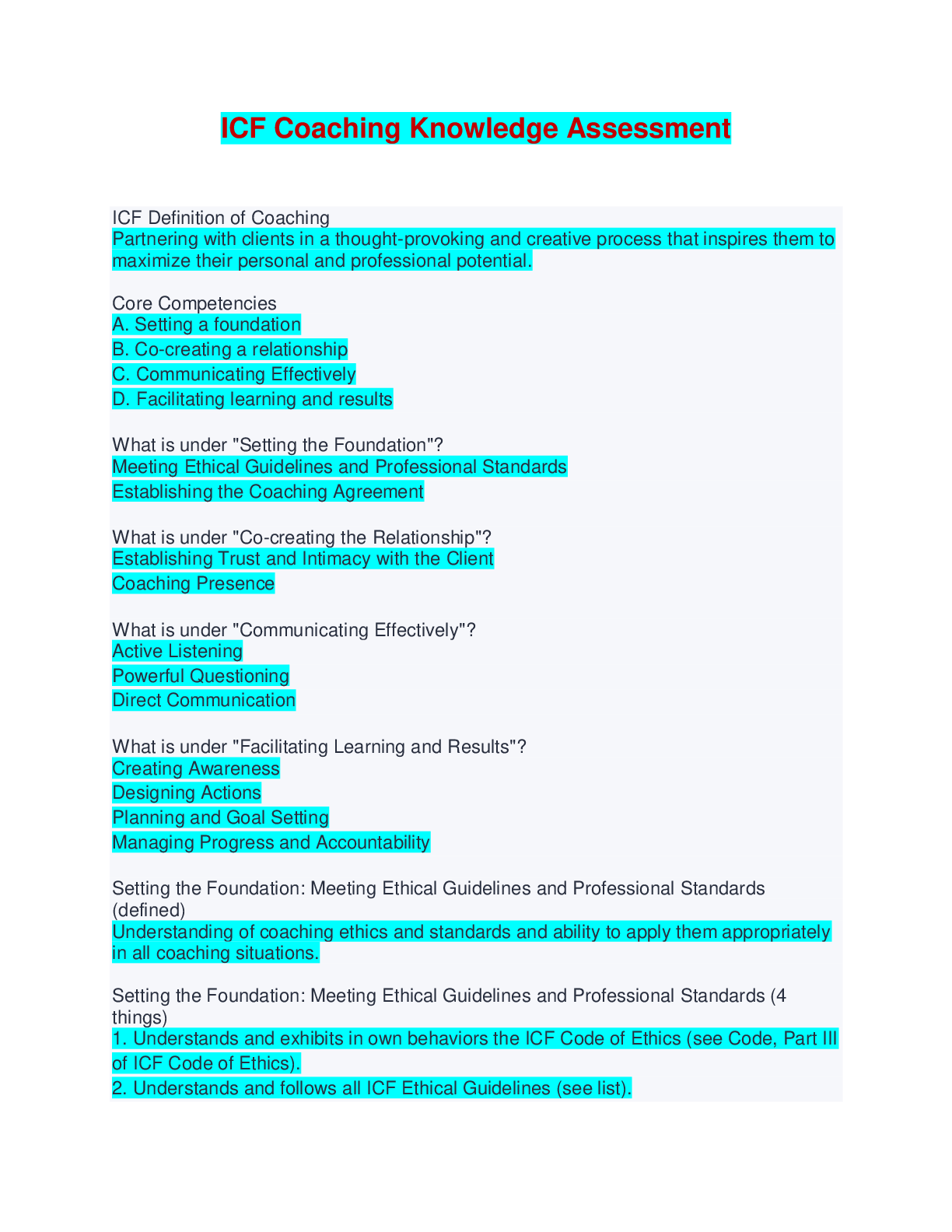
Buy this document to get the full access instantly
Instant Download Access after purchase
Add to cartInstant download
Reviews( 0 )
Document information
Connected school, study & course
About the document
Uploaded On
May 23, 2024
Number of pages
11
Written in
Additional information
This document has been written for:
Uploaded
May 23, 2024
Downloads
0
Views
6



